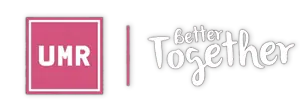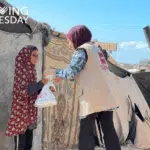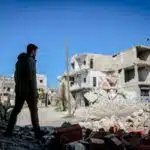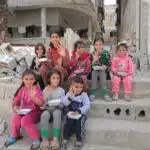Article 28 of The United Nations Convention on the Rights of the Child states that every child has the right to education, which includes the right to a place in school, curricular support, protection, and assistance. It also implies an environment where children can enjoy safety and care. While these rights include refugee children, they often are excluded from the education system for a multitude of factors.
Although research studies suggest that integrating refugee children into the education system benefits both the child and the host country, refugee children are often positioned as a potential threat to the education system. Because of this, refugee children face considerable problems that impact their access to education.
Oftentimes, they are viewed from a deficit lens, focusing on what they lack and overlooking the strengths these children could bring to the classroom. Several intersectional factors prevent these children from recommencing their education in the host country and act as barriers to their academic progress:
- Lack of school resources and shortages of school places: Schools have limited capacity and parents of refugee children cannot afford school supplies, transportation fees, any other expenses.
- Strained finances: Financial hardships force refugee children, boys and girls, to work and financially support their families instead of attending school.
- Grade placement: Some researchers favor enrolling students based on their academic level, irrespective of their age, others advocate for enrollment based on age, etc.
- Literacy: Learning the language of the host country is a crucial factor for education as well as for social interaction. Language barriers often force students to drop out because they cannot cope with the bilingual curriculum of mainstream education.
- Educational opportunities: Many have little previous schooling, if any, while others had interrupted schooling. Therefore, refugee children are often behind in all subject areas.
- School environment: Resistance results from unfair treatment, racism, bullying, discrimination, marginalization, and even corporal punishment, turning the school into another harmful space.
- Competing demands: Teachers are under pressure from challenges associated with teaching students who have experienced intense psychological traumas and are often not prepared for such an emotionally demanding task.
- Transportation: Unsafe transportation to and from school is a major concern, particularly for girls. Incidents of harassment, physical, and verbal abuse are common.
- Special needs: Refugee children with special needs or disabilities face the biggest challenges of all. They are at a higher risk of abuse and are often sheltered from the community. Resources to support their development are limited.
- Traumatic past: Refugee children carry the weight of prolonged stress which impacts their ability to learn and interact with their peers. Many experience psychosocial isolation and struggle to communicate with others.
- Non-formal education: This form of education takes place in mosques, unregistered education centers, or non-governmental organizations (NGOs). Despite these efforts, formal education is still the only option for refugee children to continue pursuing educational opportunities and work in the future.
Refugee children are the most affected victims of the complex interplay of these factors. They are in dire need of access to education and additional support as they manage trauma, uncertainty, instability, loss, and violence. Safety in education allows healing to happen with schools being a space of positive social interaction and self-development. Refugee children experience a sense of belonging at school that helps them in processing the forced displacement by the brutal war.
Refugee children scattered in different countries and accommodated to different education systems are treated as a homogenous group, despite their diverse experiences and varying levels of trauma. Many have experienced intense ordeals associated with war, dislocation, and political conflict. They have witnessed atrocities, moved through different countries on their flight to safety, lost family members, or got separated from caregivers.
The ‘education crisis’ is labeled a humanitarian and a social justice issue. Humanitarian assistance is a relief-based, temporary approach. However, the ‘education crisis’ calls for a development approach with a longer time frame that addresses the language of teaching, certification of learning, and the availability of prospects to motivate families to enroll their children in schools and aspire for the future. Education is a long-term process that prepares children for the future and allows them access to the job market with legal employment opportunities.
Education creates a sense of normality which supports children’s cognitive, physical, and psychosocial health. It is also a fundamental human right for all children – including refugees.








